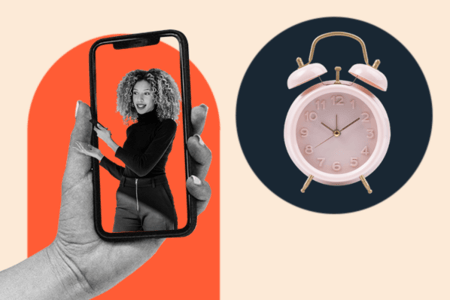-

What's a Marketing Audit? [+ How To Do One]
Let's take a look at marketing audits, the best time to conduct one, and a few best practi...
Erin Rodrigue
2/28/25
-

2025 CPL and CAC Benchmarks [HubSpot Research]
Discover current customer acquisition costs and cost per lead benchmarks to see how your b...
Erica Santiago
2/28/25
-

Succession Planning — the Best Way to Ensure Your Company’s Future
Without succession planning, your team will have to navigate chaos the second an important...
Katrina Kirsch
2/28/25
-

The 12 Sharpest Lessons from Marketing Leaders at Fortune Media, Liquid Death, O...
Check out 12 of the most insightful, provocative, or downright useful lessons from marketi...
Curt del Principe
2/27/25
From HubSpot's video library
-
.jpg?height=240&name=YT-237_A%20(1).jpg)
How to Start Affiliate Marketing With No Experience or Money (4 Free Tools!)
-

How Airlines Really Make Money | Hustlenomics | The Hustle
-
.jpg?height=240&name=IMG_0735%20(1).jpg)
What Entrepreneurs Can Learn From Native Deodorant
-

Meet the Designer Behind the Iconic Nudie Suit | Unknown Empires
-

Tips For Elevating Your Next Go-To-Market Strategy (+ Free Templates)
-

Why T-Mobile Trademarked This Color | The Hustle
-
.jpg?height=240&name=YT-237_A%20(1).jpg)
How to Start Affiliate Marketing With No Experience or Money (4 Free Tools!)
-

How Airlines Really Make Money | Hustlenomics | The Hustle
-
.jpg?height=240&name=IMG_0735%20(1).jpg)
What Entrepreneurs Can Learn From Native Deodorant
-

Meet the Designer Behind the Iconic Nudie Suit | Unknown Empires
-

Tips For Elevating Your Next Go-To-Market Strategy (+ Free Templates)
-

Why T-Mobile Trademarked This Color | The Hustle
-
.jpg?height=240&name=YT-237_A%20(1).jpg)
How to Start Affiliate Marketing With No Experience or Money (4 Free Tools!)
-

How Airlines Really Make Money | Hustlenomics | The Hustle
-
.jpg?height=240&name=IMG_0735%20(1).jpg)
What Entrepreneurs Can Learn From Native Deodorant
-

Meet the Designer Behind the Iconic Nudie Suit | Unknown Empires
-

Tips For Elevating Your Next Go-To-Market Strategy (+ Free Templates)
-

Why T-Mobile Trademarked This Color | The Hustle
-

AI Intent — Figuring Out the Purpose that Drives Service Tech
AI intent is an AI system’s ability to understand the meaning behind a user’s input. Disco...
Kolawole Samuel Adebayo
2/21/25
-

Level Up Your POS Experience — Here's What Experts Have to Say
The POS experience is an important transactional moment for your customers. Here's why — a...
Nakul Kadaba
2/21/25
-

Training AI Chatbots — The Guide for Service Teams
Uncover the insights that will help you train AI chatbots effectively, ensuring they deliv...
Kolawole Samuel Adebayo
2/19/25
-

Top 12 Free Help Desk Software & Ticketing Systems in 2025
If you're ready to take customer experience to the next level, you'll need help desk and t...
Rami El-Abidin
2/18/25

An Introduction to Digital Marketing
Learn the basics of digital marketing and explore different ways to reach your ideal customer.
-

Relationship Selling: 13 Tips to Sell Better and Close More Sales
Expert tips to build trust, close more deals, and create lasting customer connections.
Aja Frost
2/28/25
-

How to Survive & Thrive in Direct Sales
Direct sales — the sales practice that slashes intermediaries and puts salespeople directl...
Michael Welch
2/28/25
-

How Entrepreneurship Will Change in 2025 (& Beyond)
Discover the key trends that are set to define the entrepreneurial landscape in 2025 to st...
Kolawole Samuel Adebayo
2/27/25
-

A Straightforward Intro to Sales Potential, Directly from a Salesperson
Sales potential is key to guiding business decisions. Learn what this metric is, how to ca...
Michael Welch
2/27/25
From the HubSpot Podcast Network
-
Business Made Simple

Your Website Probably Stinks—Here’s How to Fix It!
-
The Science of Scaling

How to Scale a Billion Dollar Sales Team w/ John McMahon (Board Member, Snowflake)
-
Truth, Lies and Workplace Culture
-2.png?height=240&name=PodcastCovers23%20(1)-2.png)
From Bystander to Ally: How to Avoid DEIB Washing
-
Imperfect Action
-2.png?height=240&name=PodcastCovers23%20(4)-2.png)
The art of the post-launch review: 5 questions to make your next launch a success
-
Latinx In Power
.png?height=240&name=PodcastCovers23%20(6).png)
Harnessing the Power of Silence in Negotiation with Diana Kleps
-
The Sales Evangelist

5 Ways To Do Daily Outbound With LinkedIn
-
Business Made Simple

Your Website Probably Stinks—Here’s How to Fix It!
-
The Science of Scaling

How to Scale a Billion Dollar Sales Team w/ John McMahon (Board Member, Snowflake)
-
Truth, Lies and Workplace Culture
-2.png?height=240&name=PodcastCovers23%20(1)-2.png)
From Bystander to Ally: How to Avoid DEIB Washing
-
Imperfect Action
-2.png?height=240&name=PodcastCovers23%20(4)-2.png)
The art of the post-launch review: 5 questions to make your next launch a success
-
Latinx In Power
.png?height=240&name=PodcastCovers23%20(6).png)
Harnessing the Power of Silence in Negotiation with Diana Kleps
-
The Sales Evangelist

5 Ways To Do Daily Outbound With LinkedIn
-
Business Made Simple

Your Website Probably Stinks—Here’s How to Fix It!
-
The Science of Scaling

How to Scale a Billion Dollar Sales Team w/ John McMahon (Board Member, Snowflake)
-
Truth, Lies and Workplace Culture
-2.png?height=240&name=PodcastCovers23%20(1)-2.png)
From Bystander to Ally: How to Avoid DEIB Washing
-
Imperfect Action
-2.png?height=240&name=PodcastCovers23%20(4)-2.png)
The art of the post-launch review: 5 questions to make your next launch a success
-
Latinx In Power
.png?height=240&name=PodcastCovers23%20(6).png)
Harnessing the Power of Silence in Negotiation with Diana Kleps
-
The Sales Evangelist

5 Ways To Do Daily Outbound With LinkedIn
-

The Podcaster's Guide to Embedding Your Show on Your Website [+Step-by-Step Tuto...
Learn how to effectively embed podcast episodes from platforms like Spotify and Apple on y...
Darrielle Evans
2/27/25
-

28 Types of Websites to Inspire You [+ Real-Life Examples]
Discover different types of websites, from ecommerce to reviews to news websites. Get exam...
Kiran Shahid
2/27/25
-

Membership Website Ideas That Can Build You A Loyal Following
Discover creative ideas and practical tips for launching a successful membership website t...
Stephanie Trovato
2/25/25
-

AI Web Analytics: How Automating Your Analytics Process Can Level Up Your Site i...
Discover how AI web analytics can transform website data into actionable insights, making ...
Lauren Dean
2/25/25
-

How Much Does a Website Cost? Here’s What I Found Out…
Learn about the costs of building a website and discover tips to create an affordable, hig...
Stephanie Trovato
2/24/25
-

Sustainable Website Design: 9 Real Examples + Expert Insights
Explore the best sustainable website design examples and hear from experts on how to make ...
Amy Rigby
2/24/25
Explore more topics
Ready to brush up on something new? We've got more to read right this way.






.png)
